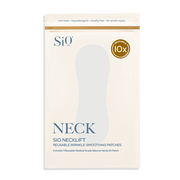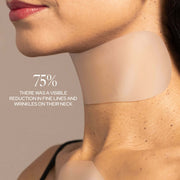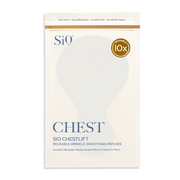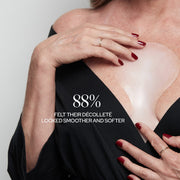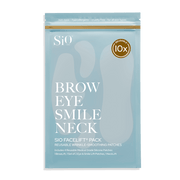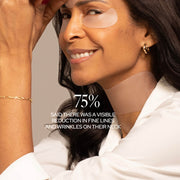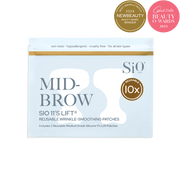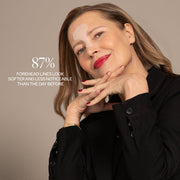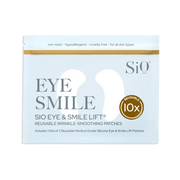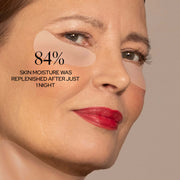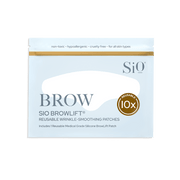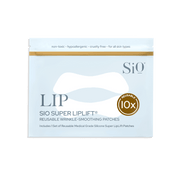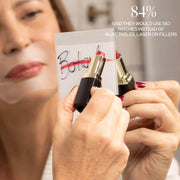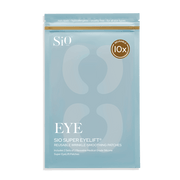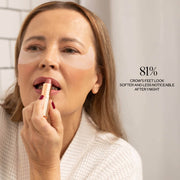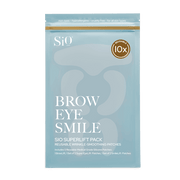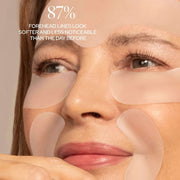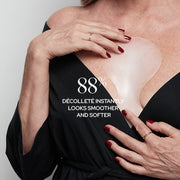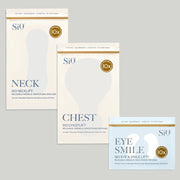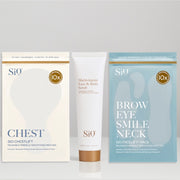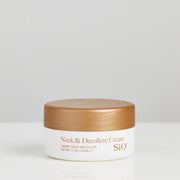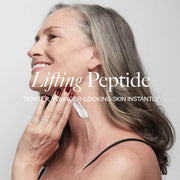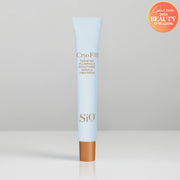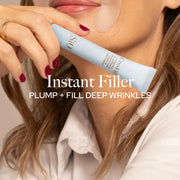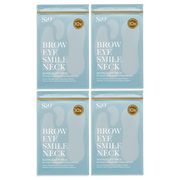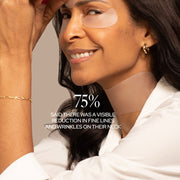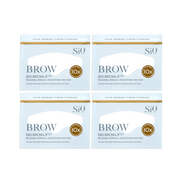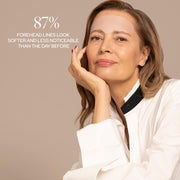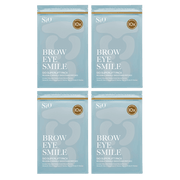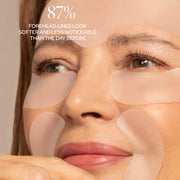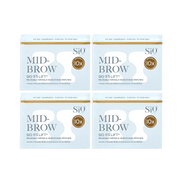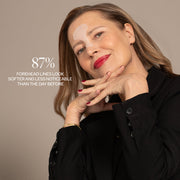Face Serum: FAQs & Choosing the Best for Your Skin

If you follow beauty blogs and magazines even peripherally, you probably feel like there’s a new skincare step in the spotlight every couple of months. (Where in the alphabet are we with the BB creams now?) Suffice to say, cleansing and moisturizing are a no brainer—but amid all the noise, there’s one other crucial step when it comes to achieving a radiant complexion: the face serum.
Serums are touted as the glow factor, the secret ingredient, the magic trick behind a perfect complexion. But what is a serum exactly, and why is it so useful? To know her is to love her. And let us count the ways we do.
What Is Face Serum?
If you’re not crystal clear on what a face serum is, you’re not alone. Even the proudest parents of a face serum collection find themselves stumped when it comes to defining the words. Face serum is essentially an umbrella term encompassing a lot of different kinds of products. But if these products have one thing in common, it’s that they all deliver a powerful concentration of active ingredients directly to the skin—meaning they’re great for targeting very specific skincare concerns, whether you’re dealing with wrinkles, blemishes, dryness, oiliness, or pretty much anything else. They’re usually applied after cleansing for a nice, clean slate—and before moisturizing, which locks in all the good stuff.
Face Serum Benefits
Now that you know the basics, here are just a handful of the impressive advantages of using a face serum:
They Can Firm Aging Skin
Don’t get us wrong; anti-aging moisturizers are great, but they often pale in comparison to face serums when it comes to the number of active ingredients. Serums are made to penetrate, rather than sit on top of the skin, so they’re highly effective at producing serious anti-aging results.
Formulas of this kind generally fall into two categories: exfoliating and plumping. Exfoliating products containing ingredients like retinol or lactic acid, for example, work chemically to buff out dead skin cells that contribute to tired-looking skin and fine lines, while also triggering cell renewal. Plumping ingredients on the other hand, like peptides, help to increase the appearance of volume and elasticity in the skin, filling in grooves and firming texture.
They’re Hydrating
Okay, let’s clear something up: There’s a big difference between hydrating and moisturizing—and we need them both. Hydrating infuses the cells with water, which enhances the skin’s natural ability to absorb nutrients and moisture. Moisturizing, however, holds hydration in by creating a protective barrier that ultimately prevents water loss. Odds are that your moisturizer (hence the name) is only doing the latter… which is where a serum comes in. Usually water-based, a hydrating serum’s whole MO is to bring that H2O. And the older we get, the more this becomes a necessity. As we age, our skin produces less oil and less hyaluronic acid on its own, so it becomes extra important to replenish topically.
Hyaluronic acid, made naturally by the body, is just one of many components that boost skin hydration and elasticity. It’s a popular ingredient in face serums because of its strong water-binding properties that allow it to hold up to 1,000 times its weight in water—but it’s not the only one of its kind. There’s a wide spectrum of humectants that can hand over much-needed hydration to the skin, and face serum ingredient lists run the gamut. Either way, think of hydration as a big glass of water for thirsty skin. It refreshes, it lifts, and it gives off that unmistakable youthful glow.
They Brighten & Color Correct
If your skin goals include ditching those dark spots and relieving redness, look no further than a color correcting serum. Many serums contain antioxidant ingredients, such as vitamin C, which not only combat signs of sun damage and aging but also naturally brighten and tone. Gentle exfoliating serums like those containing alpha-hydroxy acids (i.e. glycolic acid, lactic acid, and the like) can also contribute to the reversal of photoaging in the form of dark spots and even wrinkles.
When it comes to redness, look for a mild, nourishing serum that contains cooling or anti-inflammatory ingredients like chamomile, licorice, witch hazel, and cactus water. You’ll want to stay away from anything that’s too strong or abrasive and always do a patch test before committing to a full face if you tend to have sensitive skin.
They’re Better Value Than Other Skin Products
Hear us out. True, serums are some of the most expensive face products at the beauty store. But—even though serums might come at a higher cost, you’re more than likely getting more bang for your buck because they’re ultra-concentrated with far fewer fillers than other skincare formulas. And since you only use a few drops at a time, one bottle will last you quite a while. The numbers don’t lie!
While cleansers and moisturizers each average about a 5-10% concentration of active ingredients, on the contrary, serums tend to contain up to 70% active ingredients. So, whatever your skin aspirations may be, you can bet on a serum to deliver real results, fast.
Choosing the Best Face Serum for Your Skin Type
Not every facial serum is made for every face. But if you have a skin need, odds are there’s a serum to fulfill it. Here are some of the things to look for in a serum based on your skin type.

For Mature Skin
Let’s face it: All skin is aging skin. Anti-aging serums exist to prevent the signs of aging or to tighten and lift existing lines and loose skin. They typically work by supporting the skin’s natural production of collagen and elastin and by peeling or resurfacing, which tend to involve chemical exfoliators such as face acids.
Other top-notch anti-aging ingredients to keep an eye out for? Antioxidants like pomegranate extract or green tea extract as well as vitamins A, C, and E, which protect against damaging free radicals that can cause a wealth of skin aging concerns. But—a word of caution when it comes to retinoids like Vitamin A, if you’re new: Start with a low dose (around .25%) once a week and let your skin build up a tolerance before increasing the concentration or frequency that you apply.
For Oily Skin
Many serums are made with oily skin in mind, featuring ingredients like niacinamide, which balances oil production—or salicylic acid, which can help to slough off dead cells and visibly minimize pores. Salicylic acid, in particular, is oil-soluble, meaning it’s especially effective for oily skin. But the main thing oily skin types need to keep in mind is that oily skin is not necessarily hydrated skin. You can mattify oil without starving the skin of water!
Possibly the best asset that water-based serums have to offer oily skin is that they are super hydrating without introducing oil. A serum containing humectants like honey, aloe, glycerin or—you guessed it—hyaluronic acid, promotes skin hydration without stimulating sebum production. In fact, it may even deter the skin from generating extra oil to overcompensate for dehydration. Can’t lose there.
For Acne-Prone Skin
Acne-fighting serums can have a major influence on skin that’s prone to breakouts because they’re able to get deep into the layers of the skin and take down blemishes at the root. They not only balance the natural skin barrier, but they can also unclog pores and even help eradicate germs and impurities that can cause future blemishes.
In a good anti-acne serum, you’ll want to look out for niacinamide, zinc, or salicylic acid. In addition to clarifying the skin, they also can help reduce redness and oil production. For an antibacterial boost, thyme and tea tree are excellent astringent germ-busters. And for added skin-calming benefits, herbal ingredients such as turmeric, goldenseal, and arnica also have anti-inflammatory properties that can calm flare-ups.
A look at SiO’s Energy Serum
SiO’s Energy Serum is an innovative anti-aging powerhouse that not only hydrates down to the deepest layers but also tightens and restores youthful radiance at the surface. Polymers in the serum actually break apart on contact, resulting in a cooling sensation that refreshes and depuffs, while hydrolyzed collagen peptides form a moisture shield that fortifies the skin barrier for a bouncy, fresh look.

The formula harnesses the latest in skin technology, with diamagnetic properties that facilitate deep penetration into the skin cells. Key actives include hyaluronic acid, peptides, green tea, camellia japonica flower, and amino acids—some of the most potent natural ingredients for firming, toning, improving moisture retention, increasing resilience, and blurring lines. The serum is great all on its own, but you’ll get an extra boost by using it along with the SiO Cryodrop cold therapy tool, which enhances absorption of the serum for the ultimate results.
Face Serum FAQs
So, you’re new to serums and you have a few questions. We had a feeling! Allow us to clear some things up.
What does face serum do?
Well, that depends. There’s a broad range of serums on the market, and they all offer something different. Most times, a serum is made to treat one or more of the following skin issues: fine lines and/or wrinkles, dryness or dehydration, dark spots and/or hyperpigmentation, acne and/or oiliness, and scarring or textural issues. But even beyond those categories, there really is a serum for everything.
Serums work by infusing clean skin with highly concentrated active ingredients. And—without getting too scientific—they’re also made up of really small molecules, which allows them to penetrate the cells so your skin can absorb the ingredients quickly and deeply. So, whatever it is you need from a serum, you can be sure it will give you the maximum benefits.
Can I use a face serum along with moisturizer?
Absolutely. In fact, we highly recommend it. A serum can offer a surge of hydration, but in most cases, it’s not meant to replace a moisturizer. As serums become more popular, the term is being used more loosely to describe face oils and other oil-based products, too. Although a face oil may be able to replace a moisturizer if you have oilier skin, the large majority of face serums are water-based and work best alongside a cream.
Serums are an important step in preventing and correcting any skin concerns you might have, and moisturizers help to seal them in to give you the full effect. Think of a face serum as the main course; it may have more nutrients than anything else—but there’s good stuff in that appetizer and dessert, too!
How do I apply face serum correctly?
Generally, water-based serums should be applied after cleansing and toning—but before oil-based serums or lotions. To get the most out of your serum, take a pea size amount (or 2-3 drops) into clean hands and massage into freshly washed skin in a circular motion. This allows for elevated product absorption—and the added circulation and anti-aging perks of facial massage!
When should I apply face serum?
When to use a face serum depends greatly on the serum itself. Ideally, you have a different serum in the morning vs. nighttime. For example, a brightening vitamin C serum is a great start to the day, while a more powerful glycolic acid serum will really work its magic overnight. Read the label to see what’s recommended, but once or twice a day per product is a pretty safe bet.
Closing
It turns out that if you’ve got a face, there’s a face serum out there just for you. Be it hydrating, anti-aging, anti-inflammatory, acne-fighting, or otherwise, face serum is composed of tiny molecules that are able to deeply permeate the skin and deliver a high concentration of active ingredients for major impact. They hydrate and replenish, and although they are not moisturizers, they enhance the traditional moisturizer’s ability to occlude and protect the skin. Yes, face serums tend to come with a higher price tag—but a little goes a long way, and they may actually save you some green in the long run. See, although they are small, they are mighty. And take it from us: Face serums just might be the ticket to skin transformation that your routine has been missing.



